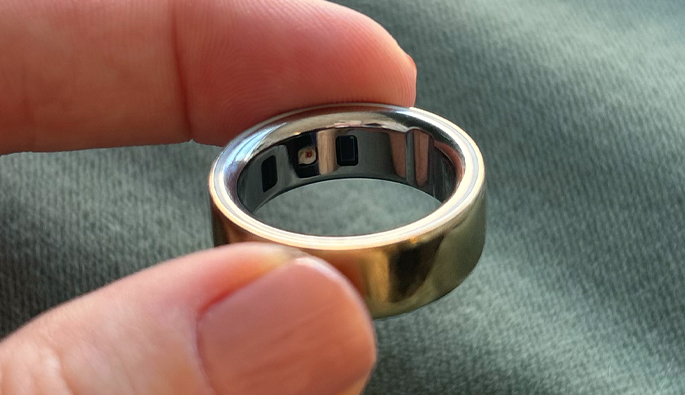Wellness is no longer a niche trend among a subset of consumers—it's a defining movement reshaping industries and driving product development. According to a recent McKinsey study, 82% of consumers are now prioritizing wellness among a $1.8 trillion global market. To this growing audience, wellness encompasses nutrition, sleep, fitness, and physical and mental health.
Key Trends Shaping the Consumer Wellness Market
Personalization is at the forefront of consumer demands, with buyers seeking tailored communications and solutions to meet their unique wellness needs. Whether it’s personalized vitamin subscriptions or adaptive fitness platforms, brands delivering focused, relevant products and services are capturing market share.
Wellness tools, products, and apps are rising rapidly in the mainstream consideration set. Wearables such as the Oura ring and fitness trackers, or sleep aids like the Hatch alarm clock or Eight Sleep pod are empowering consumers with real-time insights into their health, creating demand for complementary goods and services that sync seamlessly with this data-driven lifestyle.
Transparency rounds out consumer expectations from brands. Shoppers want to understand exactly what a product offers, and they expect honesty about its limitations, allowing them to make decisions and purchases best suited for their personal wellness journeys. Brands that are able to build trust and communicate with their audience in an authentic, human-centric way are positioned to build long-term loyalty.
How Smart Brands Are Responding
Forward-thinking brands are responding to these key trends with targeted wellness solutions rooted in innovation. For example, product reformulations are addressing new standards for health and sustainability. Many brands are pivoting to clean-label goods with fewer, recognizable ingredients to meet the demand for what consumers perceive as “better-for-you” options.
Brands that prioritize empathy and authenticity in their messaging are succeeding—rather than pushing product-first advertising, they meet consumers where they are in their wellness journeys. With social media, TikTok in particular, shaping wellness trends in real time, brands must cut through the clutter with clarity and relevance. Tailoring marketing to individuals’ needs, leveraging influencers, and aligning with dominant cultural narratives can amplify a brand’s resonance with wellness-conscious audiences.
Technology and data are essential in driving these personalized efforts. First- and third-party data allow brands to craft personalized experiences across the path to purchase, delivering the right message at the right time with the appropriate tone. Success hinges on leveraging customer insights in a way that demonstrates a core understanding of your audience to build trust and drive conversion. For example, brands employing behavioral and purchase data to send post-purchase educational content to engage customers rather than continuing to send redundant sales messaging not only improve the customer experience but also reinforce their role as a trusted partner in the customer’s wellness journey.
Challenges in Adapting to Wellness Trends
Navigating today’s crowded wellness space also presents a challenge. The surge of information, whether science-based or speculative, can overwhelm consumers. Brands must break through by providing information rooted in fact.
One critical obstacle is ensuring authenticity in strategy and messaging. Consumers demand substance, not surface-level marketing or “wellness washing,” where claims lack genuine credibility. Brands win by showing up in the right places with consistent, reliable messaging that empowers consumers to make informed decisions.
Regulatory and compliance hurdles also require brands to remain vigilant while innovating. Products targeting wellness-conscious consumers must meet increasing scrutiny from regulatory bodies, like the FDA and FTC, as well as consumer advocacy groups. Staying ahead means balancing speed-to-market with rigorous compliance protocols.
The Future of Consumer Wellness
Looking ahead, wellness trends will continue to reshape the marketplace. GLP-1 medications are sparking trickle-down effects in consumer behaviors and preferences. Restaurants and consumer packaged goods (CPG) brands are adapting menus and formulations to accommodate dietary shifts associated with the lifestyle changes these medications facilitate.
Wearables will continue to be increasingly prevalent, arming consumers with real-time insights into sleep quality, heart rate variability, and hydration levels—and will only get smarter and more capable. The increasing adoption of these tools will have an impact on how consumers interact with healthcare providers, make purchase decisions, and reorient their lifestyles to optimize their health.
Generational dynamics will further shape these trends. Millennials, currently at life stages where wellness becomes a bigger priority, are driving interest in lifestyle shifts that include cleaner eating, better sleep habits, and reduced alcohol consumption. Gen Z, meanwhile, has grown up in a world more aware of health and sustainability. Brands must cater to their inherent skepticism and provide clear, evidence-backed claims to ensure engagement.
To stay ahead, brands must adopt a mindset that views health and wellness as a continuous, integrated component of lifestyle rather than individual, isolated actions. Consumer behavior increasingly prioritizes solutions aligned with long-term goals rather than quick fixes. Brands should anticipate and account for how their products integrate into a broader wellness ecosystem.
Seizing the Opportunity
The wellness trend is here to stay, presenting an array of opportunities for consumer brands that adapt thoughtfully and authentically. Through harnessing consumer data and communicating transparently and authentically brands can create meaningful connections with wellness-conscious audiences.
Seeking to align your brand with the latest consumer wellness trends? Connect with the experts at MERGE who specialize in innovative strategies that blend data, creativity, and technology to help your brand thrive in the wellness-driven marketplace!
